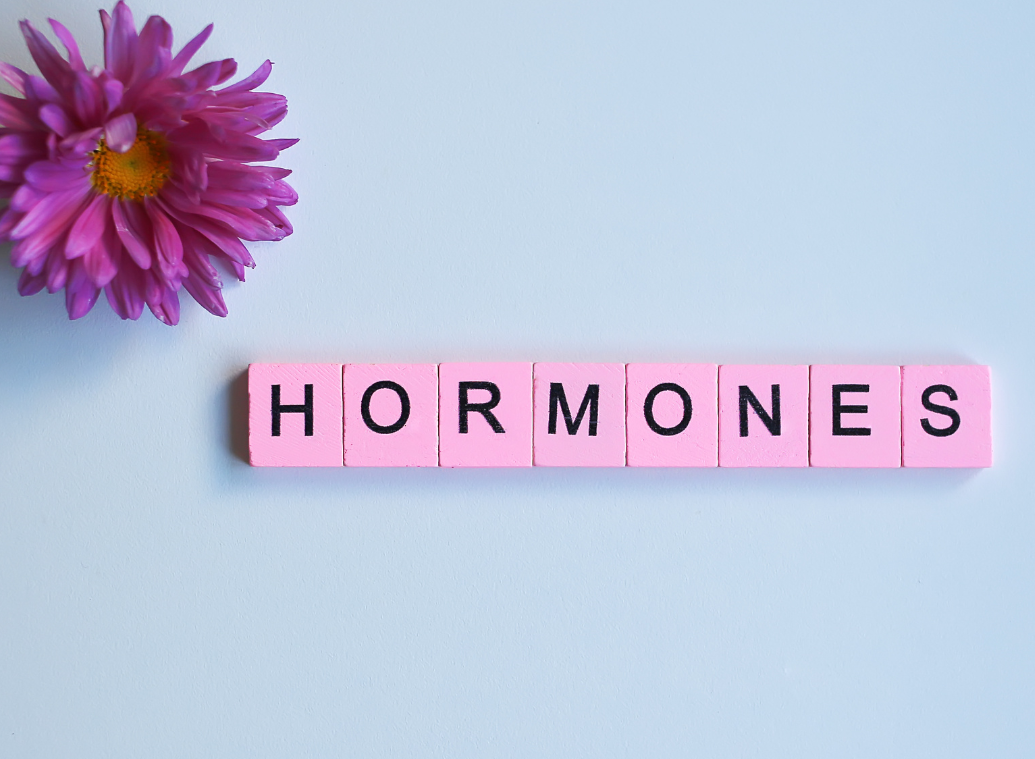Rheumatoid arthritis and hormones: How do the menstrual cycle, pregnancy, and menopause affect RA symptoms?
Published Apr 18, 2025 • By Candice Salomé
Have you ever noticed that your rheumatoid arthritis (RA) symptoms seem to shift throughout your menstrual cycle? Why do some women experience relief during pregnancy, only to see a flare-up after childbirth? And how does menopause influence the course of the disease?
Female sex hormones play a very important role in regulating the immune system and inflammation, which are key components in RA. These hormonal changes across different life stages can directly impact disease activity and symptom intensity.
In this article, we’ll explore how the menstrual cycle, pregnancy, and menopause influence RA, and offer practical strategies to help you manage hormonal fluctuations more effectively.

What role do hormones play in rheumatoid arthritis?
Estrogen and progesterone: Inflammation regulators?
Estrogen has immunomodulatory and anti-inflammatory effects, helping to calm the immune system. In contrast, progesterone may promote certain inflammatory responses. When estrogen levels drop suddenly, such as before menstruation or after childbirth, it can trigger inflammation and worsen rheumatoid arthritis symptoms.
Why is rheumatoid arthritis more common in women?
RA affects women three times more often than men. Researchers believe that hormonal fluctuations throughout a woman’s reproductive life, menstrual cycles, pregnancy, and menopause, may be key contributors. That said, genetics and environmental triggers also play significant roles in developing RA.
Menstrual cycle and rheumatoid arthritis: What’s the connection?
How do hormone shifts affect RA symptoms?
Many women with RA notice that their joint pain and inflammation increase in the days leading up to or during their period. This phase coincides with a drop in estrogen and a rise in pro-inflammatory cytokines, both of which can contribute to flares.
What happens during the luteal phase?
The luteal phase, which occurs just before menstruation, is associated with a heightened inflammatory response. Women may feel more fatigue, increased morning stiffness, and worsened joint pain.
Tracking symptoms in relation to your cycle can help identify flare patterns and prepare for them proactively.
Does pregnancy improve rheumatoid arthritis?
Why do symptoms improve for some women?
Roughly 70% of pregnant women with RA experience a decrease in symptoms, especially in the second and third trimesters. This improvement is linked to rising estrogen and cortisol levels during pregnancy. The immune system also adapts during pregnancy to prevent the body from rejecting the fetus, which can reduce RA-related inflammation.
What happens after giving birth?
Sadly, this relief is usually temporary. After delivery, hormone levels, particularly estrogen, drop sharply, and the immune system returns to its pre-pregnancy state. As a result, many women experience a flare within the first few months postpartum.
Planning ahead with your healthcare provider can help you manage this phase and discuss medication options that are safe if you're breastfeeding.
How does menopause affect rheumatoid arthritis?
Estrogen loss and worsening symptoms
Menopause can be a turning point for women with RA. As estrogen levels fall, inflammation may increase, accelerating joint damage. Studies show that RA symptoms tend to worsen post-menopause, especially in women who enter menopause early (before age 45).
Hormone replacement therapy (HRT): A viable option?
Some studies suggest that HRT may ease joint pain and inflammation in postmenopausal women with RA. However, because HRT carries potential risks, such as cardiovascular issues and certain cancers, it’s important to weigh the pros and cons with your doctor before starting treatment.
How can women manage hormone-related RA symptoms?
Tailoring treatment to your cycle
Regular check-ins with your rheumatologist can help you adjust medications based on your hormonal cycle. For example:
- Anti-inflammatory drugs may be increased around menstruation
- Disease-modifying antirheumatic drugs (DMARDs) might need fine-tuning postpartum or during menopause
- Hormonal contraception can help stabilise fluctuations and reduce symptom variability
Supporting hormone balance through lifestyle
A healthy lifestyle can go a long way in managing hormone-related inflammation:
- Anti-inflammatory diet: Include omega-3 fatty acids (from oily fish or flaxseeds), leafy greens, and berries
- Gentle physical activity: Walking, swimming, or yoga can boost endorphins and reduce inflammation
- Stress and sleep management: Deep sleep and practices like meditation or mindfulness can help regulate hormonal impacts on RA
Conclusion
There’s no doubt that hormones play a key role in the progression and fluctuation of rheumatoid arthritis. From menstrual cycles and pregnancy to menopause, these hormonal transitions can significantly influence symptom intensity.
Understanding these links allows women with RA to better anticipate changes, adapt their treatment, and make informed decisions about lifestyle choices and potential therapies. A personalised and proactive approach, in collaboration with healthcare professionals, can greatly improve quality of life.
Did you find this article helpful?
Give it a “Like” and share your thoughts and questions with the community in the comments below!
Take care!
Sources :
de Man, Y. A., et al. "Disease activity of rheumatoid arthritis during pregnancy: results from a nationwide prospective study." Arthritis & Rheumatism, 2008.
Pikwer, M., et al. "Early menopause is an independent predictor of rheumatoid arthritis." Annals of the Rheumatic Diseases, 2012.
Johanna Sigaux, Jean Roudier, Lilia Nacef, Caroline Béal, Pourquoi la polyarthrite rhumatoïde touche-t-elle préférentiellement les femmes ?, Revue du Rhumatisme, 2025, ISSN 1169-8330, https://doi.org/10.1016/j.rhum.2025.02.001.
L’arthrite et la santé des femmes : ce que vous devez savoir, Arthritis Research Canada
Comprendre la polyarthrite rhumatoïde, Ameli

 Facebook
Facebook Twitter
Twitter
